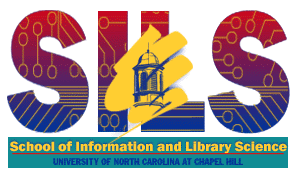
INLS 131
Management of Information Agencies
Fall 1999
Getting Ready for Class of Oct. 13, 1999
ORGANIZING STRUCTURES
We've had an introduction to organizing principles from the examination of the two organization charts that Dr. Hewitt and John Oberlin presented. These gave us a top-down view of the various pieces and parts of the organization. For our class on Wednesday, I will ask you to read the following very straight-forward textbook treatment of some of the ways of organizing (called by the authors "departmentalizing"). The authors also address questions of delegation, a primary management tool and one it will be useful to understand and be able to apply.The reading is:
Montana, Patrick J. and Bruce H. Charnov, "Organizational Structures: Concepts and Formats," Chapter 11 (pp. 155-169) of their Management. 2nd ed. Barron's, 1993.When we talk about how organizations function, we talk about essentially three aspects:
For an organization of your choice (or for one of the two presented in class or for AMS of our case study), describe how these three aspects take place:
- the way in which the organization is differentiated, that is, how the organization divides itself into specialized groups to accomplish its major tasks
- the way in which the organization is integrated, that is, how the organization draws together and coordinates the work of various specialized subgroups
- the important creative transformations that the organization must perform to survive and to be effective, that is, the tasks and processes that the organization must manage and control to cope with its environment and to achieve its mission.
A somewhat standard list of key creative transformations for all organizations provides approximately 50 aspects of the organization from which you may wish to select the three or four that you think are especially important for the organization you have chosen to analyze. List the ones you have selected and tell why you think they need to have the manager's special attention for the organization you have focused on to succeed.
- Begin with the differentiation. How is the organization departmentalized? Is it on one of the bases you can identify from the reading or is it on more than one basis? If it is an organization you are intimately familiar with, perhaps you can address some of the informal groups that also perform significant functions for the organization.
- Then, analyze how the work of the different groups gets coordinated to make the organization function smoothly as a unit. Describe how the coordination takes place -- is it through a common supervisor or through product/service teams, task forces, commmittees, informal liaisons, or not at all for some groups?
- The last task is to identify the key processes that the organization must manage in order to survive and to be effective. The key processes you identify may derive from your knowledge of the organization or they may come from recent reading or discussion with others. How well, in your judgment, is the organization differentiated and integrated in order to manage these key processes? What would you change if you were the manager? What do you think is a really valuable aspect?